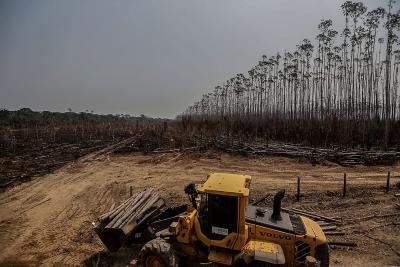Nations won't meet 2030 climate targets 'without' protecting indigenous lands
By IANS | Published: April 1, 2022 10:51 AM2022-04-01T10:51:02+5:302022-04-01T10:55:21+5:30
New Delhi, April 1 A new report from the Forest Declaration Assessment, authored by World Resources Institute and ...

Nations won't meet 2030 climate targets 'without' protecting indigenous lands
New Delhi, April 1 A new report from the Forest Declaration Assessment, authored by World Resources Institute and Climate Focus, has found that without protecting and accounting for indigenous and community lands, the 2030 climate targets will be impossible to achieve.
The report, focusing on the mitigation potential of indigenous and community lands in Brazil, Colombia, Mexico and Peru has found that these lands are a hidden, undervalued, and foundational component of countries' efforts to cut emissions and adapt to climate impacts in line with their nationally determined contributions under the Paris Agreement.
Without explicitly recognising the risk to and outlining measures to protect these lands, drastic and realistically impossible, actions in other sectors would have to take place to come close to matching the value of mitigation services provided by these lands.
"Peru would need to retire its entire vehicle fleet to compensate for losing just half of the sequestration services provided by indigenous and local community held forests," Darragh Conway, Lead Legal Consultant at the international climate think tank Climate Focus, says.
This report comes after the release of the Working Group III contribution to the IPCC Sixth Assessment Report and echoes a growing chorus of voices in the scientific community arguing for a greater role for indigenous and local communities and recognition of their rights as a climate solution for addressing global crises linked to the destruction of nature.
Across the four countries analyed in this report, indigenous lands sequester more than twice as much carbon as non-indigenous lands.
With the countries' latest pledges under the Paris Agreement still insufficient to avert the worst effects of climate change, indigenous lands play a crucial but largely unrecognized role in sequestering carbon.
"Displacing indigenous communities from their land interferes with and degrades the biocultural and natural systems on which indigenous communities and lands thrived, with disastrous effects on the ecosystems left behind," says Shazabe Akhtar, research analyst at World Resources Institute.
To achieve 2030 global mitigation, medium-term pledges, known as nationally determined contributions (NDCs), were made by countries under the Paris Agreement.
Achieving more ambitious contributions is a key piece of being able to limit global heating to 1.5 degrees C above pre-industrial levels.
Despite governments submitting more ambitious NDCs during COP26 in Glasgow this past November, collective contributions continue to fall short.
"The emissions sequestered in IPLC lands each year have the potential to play a major role in helping countries meet their NDCs. These lands currently sequester amounts equivalent to an average of 30 per cent of our focus countries' unconditional NDC targets for 2030, despite constantly being invaded by ranchers, loggers, and miners," says Juan Carlos Altamirano, economist at World Resources Institute.
These targets under the Paris Agreement will not be achieved without explicit recognition and protection of indigenous peoples and other local communities' restored and protected lands.
Disclaimer: This post has been auto-published from an agency feed without any modifications to the text and has not been reviewed by an editor
Open in app